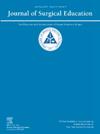外科住院医师持续质量改进计划的方法
IF 2.1
3区 医学
Q1 EDUCATION, SCIENTIFIC DISCIPLINES
引用次数: 0
摘要
目的设计、实施并分析普外科住院医师多层面质量改进(QI)教育课程的有效性。从2020年6月到2024年7月,采用计划-执行-研究-行动(PDSA)方法进行了一项前瞻性研究,以设计和实施三管齐下的课程:基础教学讲座,居民领导的教师指导的QI项目,以及每季以部门QI为重点的发病率和死亡率会议。在每个PDSA周期结束时,调查居民接受的教育主题、参与的空气质素改善活动、对空气质素改善原则的了解,以及对未来空气质素改善工作的准备和兴趣。一个由各持份者组成的指导委员会,根据前几年的调查和经验,在每学年(PDSA周期)后指导改革。进行纵向队列评估。主要城市普外科住院医师项目参与者普外科住院医师结果完成基线调查和4个PDSA周期。随着时间的推移,报告QI教育主题教育、参与QI活动和了解QI原则的居民比例有所改善。基线时对QI的总体兴趣为82%,并在整个时间线保持稳定。在PDSA周期2中实施了由居民领导的教师指导的实践组件,并在所有后续课程中成功完成了实时QI工作。PDSA方法允许进行更改以克服已确定的障碍,例如向基于视频的系列讲座的过渡以及为QI项目设计创造居民保护时间。结论设计和实施包括教学和实践组成部分的QI课程是可行的,并显著增加了居民对QI的了解,舒适和兴趣的比例。教师专业知识和支持、居民参与、项目管理和项目主管领导是成功的关键。本文章由计算机程序翻译,如有差异,请以英文原文为准。
A Recipe for a Continuous Quality Improvement Program in Surgical Residency
OBJECTIVE
To design, implement, and analyze the effectiveness of a multifaceted quality improvement (QI) educational curriculum for a general surgery residency program.
Design
A prospective study was performed using the Plan-Do-Study-Act (PDSA) methodology from June 2020 to July of 2024 to design and implement a 3-pronged curriculum: foundational didactic lectures, resident-led faculty-mentored QI projects, and quarterly departmental QI-focused morbidity and mortality conferences. At the end of each PDSA cycle, residents were surveyed on educational topics received, participation in QI activities, knowledge of QI principles, and preparedness and interest in future QI work. A steering committee consisting of various stakeholders guided changes after each academic year (PDSA cycle) based on the prior years’ surveys and experience. A longitudinal cohort assessment was performed.
Setting
Major metropolitan general surgery residency program
Participants
General surgery residents
Results
A baseline survey and 4 PDSA cycles were completed. Over time, improvements were seen in the proportion of residents who reported education on QI educational topics, participated in QI activities, and had knowledge of QI principles. Overall interest in QI was 82% at baseline and remained steady throughout the timeline. Resident-led faculty-mentored practical components were implemented in PDSA cycle 2 and have led to the successful completion of real-time QI work in all subsequent classes. PDSA methodology allowed for changes to overcome identified barriers, such as the transition to a video-based lecture series and the creation of resident-protected time for QI project design.
Conclusions
The design and implementation of a QI curriculum that includes both didactic and practical components is feasible and significantly increases the proportion of residents with knowledge, comfort, and interest in QI. Faculty expertise and buy-in, resident engagement, program management, and program director leadership are crucial for success.
求助全文
通过发布文献求助,成功后即可免费获取论文全文。
去求助
来源期刊

Journal of Surgical Education
EDUCATION, SCIENTIFIC DISCIPLINES-SURGERY
CiteScore
5.60
自引率
10.30%
发文量
261
审稿时长
48 days
期刊介绍:
The Journal of Surgical Education (JSE) is dedicated to advancing the field of surgical education through original research. The journal publishes research articles in all surgical disciplines on topics relative to the education of surgical students, residents, and fellows, as well as practicing surgeons. Our readers look to JSE for timely, innovative research findings from the international surgical education community. As the official journal of the Association of Program Directors in Surgery (APDS), JSE publishes the proceedings of the annual APDS meeting held during Surgery Education Week.
 求助内容:
求助内容: 应助结果提醒方式:
应助结果提醒方式:


